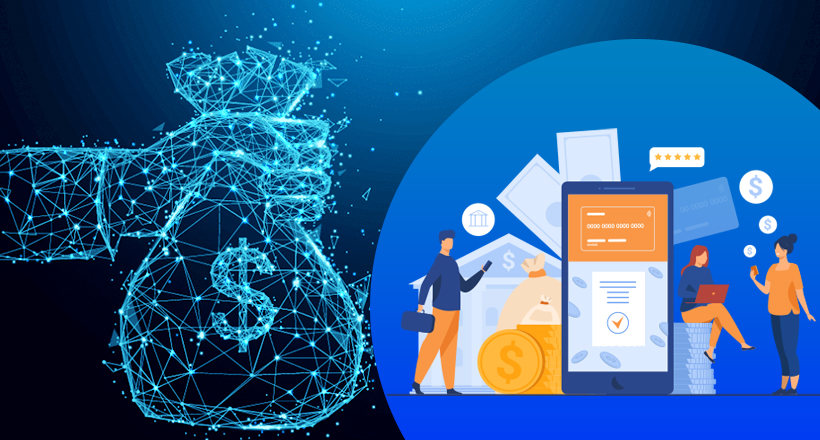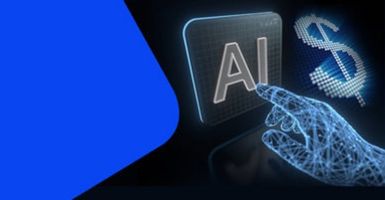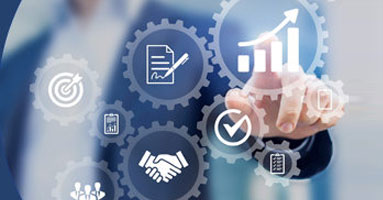Collections is very important for the well-being of any business, but the collection process can be time-consuming and costly. The technologies of digital transformation can redefine B2B collections. Through application of integrated, intelligent technologies that automate collections management, organizations can see significant improvement in their AR collections, creating a better collections experience.
Many enterprises depend on sheer guesswork when it comes to their AR collections. The collection process is labor-intensive and requires exhaustive information, but not many have access to the real-time collections information. As a result, collection efforts are hampered. While the focus is mostly on large customers and bills, many mid and small-dollar invoices go unchecked. The more global the organization and the higher its volume, the more difficult it is to keep up.
Advanced technology is essential for efficient b2b collections. To meet the collections best practices identified by the Hackett Group requires an enterprise to “go digital.” That means optimizing automation through the application of machine learning, analytics, and digital assistance. It also means the consolidation of complete information for availability and visibility.
While a pipe dream in the past, today, there are digital AR/Order-to-Cash platforms that can eliminate 80 percent of the manual collection efforts through AI and associated technologies. The technologies free collectors to monitor all accounts, manage the exceptions, and gain valuable insights from the data. There are seven “digital” elements necessary to achieve this new level of collections performance, made possible through the application of artificial intelligence (AI), analytics and automation.
What are the seven essentials to move from `Average’ to `World-Class’ collections?
1. An Enterprise-wide View
Gaining a global view of the AR portfolio is paramount to many organizations, especially those dealing with high-volume portfolios. However this requires a great deal of manual effort to gather the data to get close to real-time information. Digital receivables, however, overcome the fragmentation of systems and data, offering visibility of current enterprise-wide AR information.
Digital AR/O2C platforms achieve this by combining advanced APIs and intelligent document processing with the consolidation of all relevant AR information into a single source data lake. Managers can finally view the entire picture by business unit or by customer details. This long-sought capability is becoming the new model. Such unified digital AR portfolios provide the foundation for digital collections.
2. Automated Collection Strategies
Automated collection strategies accelerate cash flow. An organization must define a central strategized process for collections. Such a strategy comes handy in setting the collections on auto-pilot. With process defined, a digital system employs machine learning and analytics to determine actions appropriate to each customer.
For example, if an invoice is 15 days past due for a customer, an organization may want to send a gentle reminder. However if the customer is habitually late in paying, the system will identify that and send a slightly different communication. An intelligent digital platform will track customers’ changing behavior and automatically correspond with the customer while alerting collectors and AR managers. Organizations can use dunning letters to send automated, customized reminders while minimizing the number of manual touches.
3. 100 Percent Customer Touch
The automated collections system does not have the limitations on time and attention that human collectors do. Instead, it can maintain continuous touch with all customers, sending invoices, statements, and customized messages based on customer behavior and collection strategies.
As an essential step in digital collections, an organization sets up correspondence that is proactive and meaningful. It must define dialogs for its communications and create templates. Companies must design consistent statement and invoice formats that customers can easily understand and the circumstantial messages for letters and email. Tools such as dunning letters simplify collections management by minimizing the number of manual touches and boosting collections by automatically delivering consistent, professional dunning notices across multiple languages and currencies.
4. Digital Assistance
State-of-the-art AR/O2C platforms employ digital assistants to provide automated, interactive, verbal support to customers. For example, if a customer has a question, wants to see another document, or wishes to make a payment, they don’t have to make a phone call or send an email and wait. Instead, a digital assistant is accessible in the customer communication, ready to answer the question, provide information or guide payment.
Enterprise digital finance assistants such as Emagia’s Gia play a key role in speeding up collections against outstanding customer invoices. Trained with human-like conversational skills, Gia proactively notifies customers on upcoming payments, presents payment options and processes payments while enhancing the customer experience. Gia can even collect dispute information from customers for quick resolution.
5. Prioritized Task Lists
Digital collection management software automates collections activities, removing the mundane and largely manual efforts for 80 percent of the AR portfolio. Meanwhile, it alerts collectors on the 20 percent that requires human intervention. In these cases, an automatically prioritized task list supports the collectors.
In digital collections, analytics plays a crucial role, continuously monitoring accounts and presenting collectors with prioritized tasks. As a result, collectors do not have to spend their valuable time gathering and sorting information to determine priorities. Instead, every day the system automatically provides collection priorities, along with features such as automatic follow-ups. The system can also transcribe call voice recordings into the customer record.
6. Digital Bots
Digital bots combined with cognitive document processing support productivity by automating several tasks in receivables collection. For example, bots post invoices to customer sites, gather payment or remittance information from customers’ vendor portals and read stacks of emails. Unfortunately, most organizations are doing these activities manually outside their systems, which is highly time-consuming.
Digital collection systems bots handle these tasks, freeing up staff to focus on collection strategies, cash flow forecasts, and analytics.
7. Analytics and Cash Flow Forecasting
What will the organization collect this week? What will it collect next week? These are vital questions. With a single-truth source (data lake), organizations can have access to this data. Digital AR/O2C platforms apply analytics to that data to understand patterns and provide more accurate cash forecasts. And through machine learning, forecasts get more refined over time.
AR and collections can become a data-driven intelligence operation, adding new value to an organization. Digital transformation of business services functions, according to Hackett, is how an enterprise will move to world-class performance.
For a demonstration of Digital Collections or the complete capabilities of digital AR/O2C, contact Emagia.













